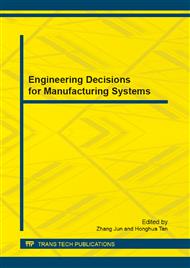p.318
p.324
p.331
p.337
p.344
p.350
p.357
p.365
p.371
Finite Element Analysis for Double Anterior Cruciate Ligament Reconstruction Analysis
Abstract:
This paper will take five male patients who performed a double-bundle anterior cruciate ligament (ACL) reconstruction to do finite element analysis and compare the stress distributions with each other. In order to lead this paper to reality, a model of the original bone tunnel according to CT is created and transformed into a finite-element model based on the reverse engineering method. The double-bundle ACL graft in the bone tunnel simulates the interference screw which screwed the ACL under the limit of friction and fix of contact. The dynamic analysis is performed with the femur flexion-extension axis which is under the limit of a fixed rotation angle (100°) and two degrees of freedom of motion in flexion. In the postprocess, the ACL graft is divided into several parts to get the stress distribution which will be easily to discuss the results. The result shows that max stress can be found on the top of the ACL or at the start point of the ACL because of the fixed position of the interference screw. The stress in PL bundle is greater than the stress in AM bundle. The angle of flexion will affect the stress and the stress might be higher at a specific angle.
Info:
Periodical:
Pages:
344-349
Citation:
Online since:
September 2013
Authors:
Price:
Сopyright:
© 2013 Trans Tech Publications Ltd. All Rights Reserved
Share:
Citation:


